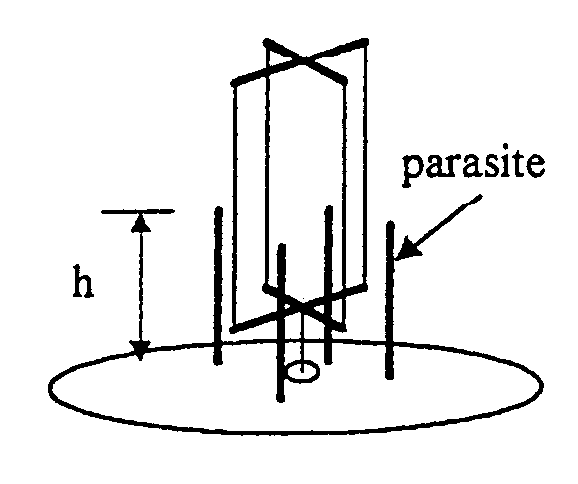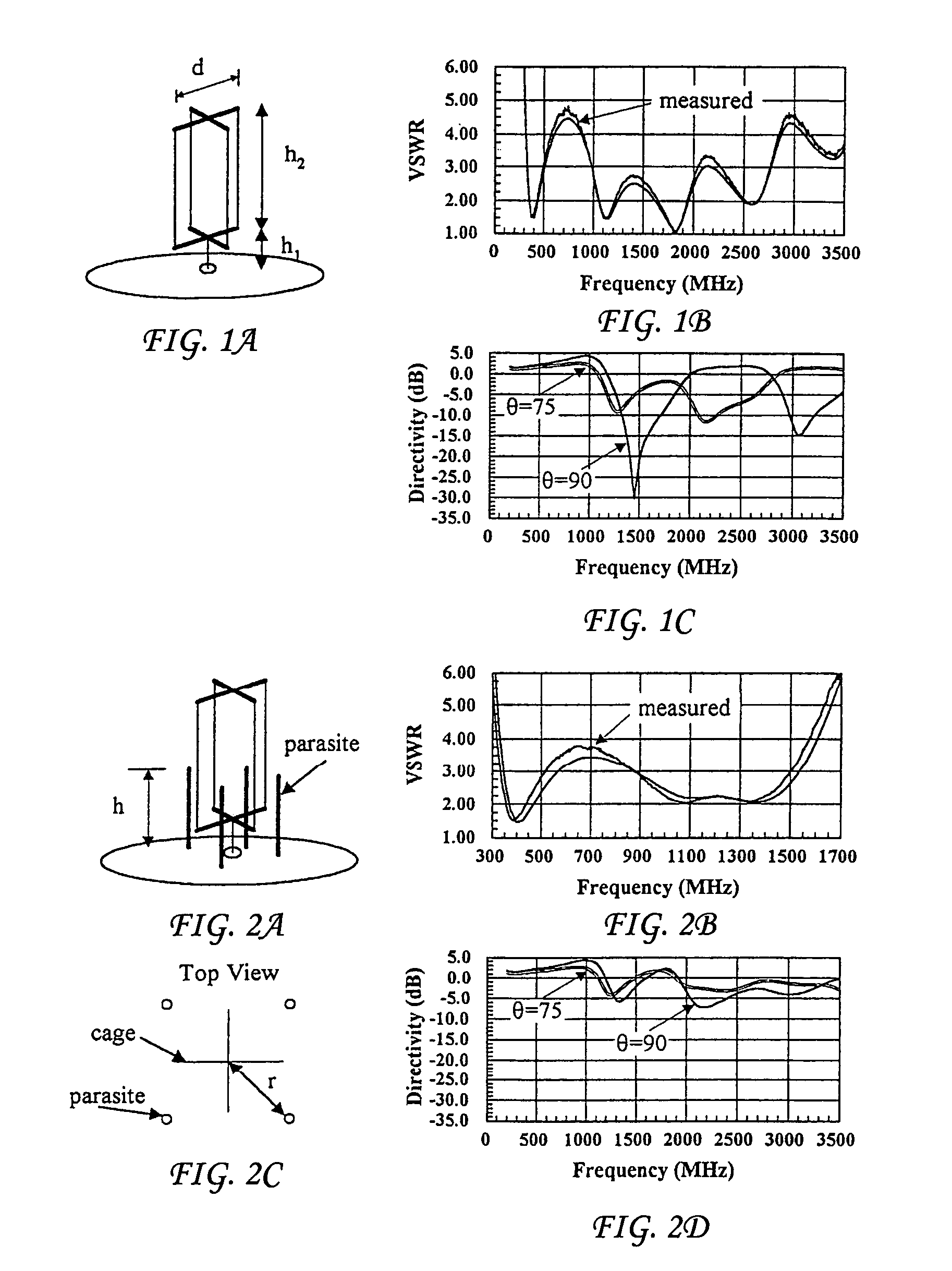Designs for wide band antennas with parasitic elements and a method to optimize their design using a genetic algorithm and fast integral equation technique
a technology of parasitic elements and wide band antennas, applied in the direction of resonant antennas, antenna earthings, instruments, etc., can solve the problems of shortening the needs, achieve the effect of improving the overall bandwidth, reducing the height of the antenna, and improving the vswr
- Summary
- Abstract
- Description
- Claims
- Application Information
AI Technical Summary
Benefits of technology
Problems solved by technology
Method used
Image
Examples
Embodiment Construction
[0113]We modeled and measured the properties of a so-called cage monopole. The cage monopole shown in FIG. 1A consists of four vertical straight wires connected in parallel and driven from a common stalk at the ground plane. The ground plane in this model is assumed to be of infinite extent to facilitate analysis. The parallel straight wires are joined by crosses constructed of brass strips. The strip width was selected to be electrically equivalent to the wire radius for the purpose of modeling the structure. Compared to a single, thin, straight wire, the cage structure with multiple wires has a lower peak voltage standing wave ratio (VSWR) over the band. This is important since a structure which has a comparatively small VSWR over a band is more amenable to improvements in bandwidth with the addition of other components such as loads or parasites than is the common single-wire monopole with higher VSWR.
[0114]Next we add four parasitic straight wires of equal height (h) and distanc...
PUM
 Login to View More
Login to View More Abstract
Description
Claims
Application Information
 Login to View More
Login to View More - R&D
- Intellectual Property
- Life Sciences
- Materials
- Tech Scout
- Unparalleled Data Quality
- Higher Quality Content
- 60% Fewer Hallucinations
Browse by: Latest US Patents, China's latest patents, Technical Efficacy Thesaurus, Application Domain, Technology Topic, Popular Technical Reports.
© 2025 PatSnap. All rights reserved.Legal|Privacy policy|Modern Slavery Act Transparency Statement|Sitemap|About US| Contact US: help@patsnap.com



